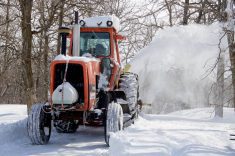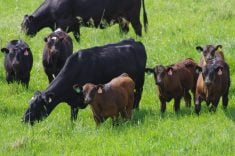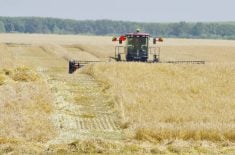Manitoba’s first-cut hay volume is hit or miss, depending on location of patchy thunderstorms responsible for most of the growing season’s precipitation.
“Because they’re deep-rooted and we had relatively good soil moisture in the spring, the first crop of alfalfa is looking not too bad,” said John McGregor, forage expert with the Manitoba Forage and Grassland Association.
The outlook for grass crops is less optimistic. Producers are reporting “anything from half a crop to a full crop,” McGregor said. “It’s quite variable across the province.”
Read Also

Time to be honest about hemp, experts say
Years of hype have given way to a more realistic view of hemp. Farmers and processors say the crop’s future depends on solid agronomy, honesty.
Inconsistent rain led to patchy forage stands in Manitoba, and there is serious drought elsewhere on the Prairies.
Although more rain fell across the province in the third week of June, Manitoba’s weekly crop report flagged farmer concern over dry conditions.
“Sporadic showers” from June 12-18 “made little contribution to crop moisture maintenance,” the report said. “Hay and pasture growth has slowed and is showing signs of moisture stress. Hay yields will most likely be down from last year.”
Provincial extension staff say dairy farmers are largely done their first cuts and about half of beef producers had started haying as of last week’s crop report.
Rainfall as of June 18 was highly variable across Manitoba. Within the southwest region alone, precipitation since May 1 ranged from 20 per cent of normal (Erikson) to 140 per cent of normal (Deloraine), according to Manitoba Agriculture weather data.
The variation was even more pronounced in the Interlake. As of June 18, Woodlands had seen 20 per cent of normal rainfall, the driest in the region. A little over half an hour away, Teulon had seen 88 per cent of normal.
“Where it’s dry, it’s dry and the crop looks to be half, and the rest looks like it’s going to come off somewhere normal,” McGregor said. It reminds him of conditions in 2019 and 2020.
Those years had feed shortages. In 2019, lack of feed led several municipalities in the Parkland and Interlake to declare a state of agricultural disaster. The province later announced a forage insurance review and rent relief for those who leased Crown land for forage and grazing in hard-hit areas.
“We didn’t have a drought across the province like we did in ’21, but we had areas that were lacking moisture … We had areas that were pulling a crop off that was normal, but other areas that were pulling off almost no crop or half a crop,” McGregor said.
“In those years, we were moving hay back and forth around the province. When we hit ’21, we were bringing hay in from all over the place because the whole province was droughted.”
Provincial pest updates through June also noted issues with alfalfa weevil (leading to early cuts in the Interlake) and grasshoppers in pastures.
Hay market
Manitoba will likely see higher hay prices if the weather trend continues, McGregor said, but if the province can fill its own demand, those hikes will likely not be dramatic.
That might change if more critically dry areas in the rest of the Prairies start to draw on Manitoba’s forage.
“Then we’re going to be competing with an outside market, and who knows where that’s going to go,” McGregor said.
Hay prices in Manitoba were slow to come down off their peak in 2021, although demand significantly dropped the following year.
“What kind of happened last year was we saw asking prices which were lower than in ’21, but still relatively high, but what we were finding was they were asking for it, but they weren’t getting those prices,” McGregor said.
Discounted hay listings started to appear this spring as producers looked to clear room for the new harvest. McGregor said producers expecting lacklustre cuts could thus build their reserves with “relatively cheap last-year hay.”
The MFGA’s last hay market update was released in January. Some alfalfa was going for five cents a pound, although dairy quality was eight to 11 cents. Mixed hay ranged from six to seven cents a pound for good quality alfalfa-grass mix, or three to four cents for beef quality. Grass hay ranged from three to six cents a pound.
Second cut
In general, the province needs much more rain if growers are to have more than a minimal second cut, Manitoba Agriculture’s June 20 crop report noted.
“Even with the alfalfa crop, it’s going to be a reduced second cut if they haven’t received any additional moisture and the grass hay crop is going to be the same way,” McGregor concurred.
The second grass cut could be “non-existent” in some areas unless there is rain.
“I guess the other concern that I see from past years is that, even right now with the first cut coming off, even if we got a rain, there’s going to be a delay and a reduced yield on a potential second crop anyway,” he said.
















